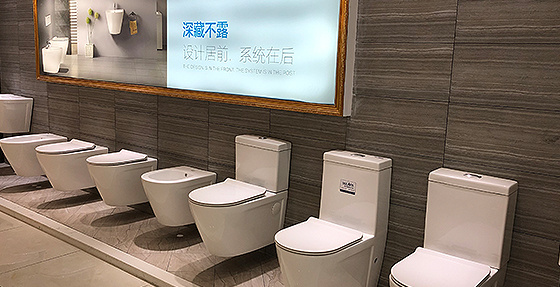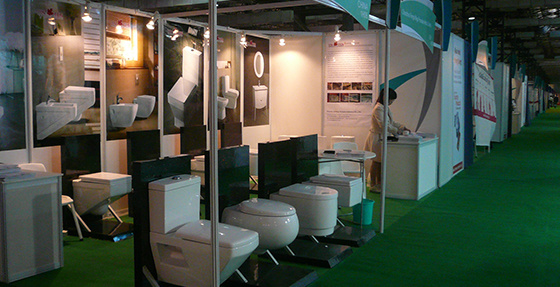Wall Mounted Toilet Tanks: A Comprehensive Guide for First-Time Buyers
Release time:
2025-07-01
Wall Mounted Toilet Tanks: A Comprehensive Guide for First-Time Buyers Table of Contents Introduction to Wall Mounted Toilet Tanks Benefits of Wall Mounted Toilet Tanks Types of Wall Mounted Toilet Tanks Installation Guide for Wall Mounted Toilet Tanks Maintenance Tips for Wall Mounted Toilet Tanks Troubleshooting Common Issues Cost Considerations for Wall Mounted Toil

Wall Mounted Toilet Tanks: A Comprehensive Guide for First-Time Buyers
Table of Contents
- Introduction to Wall Mounted Toilet Tanks
- Benefits of Wall Mounted Toilet Tanks
- Types of Wall Mounted Toilet Tanks
- Installation Guide for Wall Mounted Toilet Tanks
- Maintenance Tips for Wall Mounted Toilet Tanks
- Troubleshooting Common Issues
- Cost Considerations for Wall Mounted Toilet Tanks
- Conclusion
- Frequently Asked Questions
Introduction to Wall Mounted Toilet Tanks
In modern bathroom design, wall-mounted toilet tanks have emerged as a popular choice among homeowners and designers alike. These sleek fixtures combine aesthetics with functionality, offering a contemporary solution that maximizes floor space and enhances overall bathroom appeal. For first-time buyers, understanding the intricacies of wall-mounted toilet tanks can seem daunting, but this guide aims to simplify the process and ensure you make the best choice for your needs.
Benefits of Wall Mounted Toilet Tanks
Wall-mounted toilet tanks come with a myriad of benefits that make them a desirable option for many:
Space-Saving Design
One of the primary advantages of wall-mounted toilet tanks is their **space-saving design**. By installing the tank within the wall, you free up floor space, making your bathroom appear larger and more open. This design is particularly beneficial for smaller bathrooms where every inch counts.
Aesthetic Appeal
Wall-mounted toilets present a **sleek and modern look**, contributing to a minimalist aesthetic. This style complements various bathroom designs, from contemporary to industrial, allowing homeowners to express their personal style.
Ease of Cleaning
With the toilet bowl elevated off the floor, cleaning becomes a breeze. There are no hard-to-reach areas, allowing for **quick and efficient maintenance**. This feature is especially advantageous for busy households.
Water Efficiency
Many wall-mounted toilet tanks are designed with water-saving technology, helping homeowners reduce their water consumption. This not only benefits the environment but also translates to lower water bills.
Noise Reduction
Wall-mounted toilets often feature better insulation, leading to a significant reduction in noise when flushing. This quiet operation enhances the overall bathroom experience.
Types of Wall Mounted Toilet Tanks
Understanding the different types of wall-mounted toilet tanks is crucial in making an informed purchase.
Single Flush vs. Dual Flush
Wall-mounted toilets typically offer two flushing options: **single flush** or **dual flush**. Single flush models use a single amount of water for each flush, whereas dual flush models provide two options—a lower volume for liquid waste and a higher volume for solid waste, promoting water conservation.
Concealed vs. Exposed Tanks
Concealed tanks are built into the wall, offering a seamless look. Exposed tanks, while less common, are visible and can be a design feature. The choice between the two depends on your aesthetic preference and bathroom layout.
Standard vs. Compact Sizes
Wall-mounted toilet tanks come in various sizes. Standard sizes cater to most bathroom designs, while compact options are ideal for smaller spaces, ensuring a fit without compromising functionality.
Installation Guide for Wall Mounted Toilet Tanks
Installing a wall-mounted toilet tank may seem complex, but with the right guidance, it can be a manageable DIY project.
Gathering Necessary Tools and Materials
Before beginning installation, ensure you have the following tools and materials:
- Wall-mounted toilet tank kit
- Drill and drill bits
- Level
- Wrench
- Pipe wrench
- Silicone caulk
Preparing the Wall
1. **Choose the Location**: Select an appropriate wall that can support the weight of the toilet and tank.
2. **Mark the Height**: Use a level to mark where the toilet will be installed, typically between 15 to 19 inches from the floor.
3. **Cut the Opening**: If necessary, cut an opening in the drywall to accommodate the tank.
Installing the Tank
1. **Secure the Tank Frame**: Follow the manufacturer’s instructions to secure the tank frame into the wall.
2. **Connect Water Supply**: Attach the water supply line to the tank, ensuring all connections are tight to prevent leaks.
Mounting the Toilet Bowl
1. **Attach the Toilet Bowl**: Align the bowl with the mounting frame, ensuring it sits securely.
2. **Test for Stability**: Gently shake the bowl to ensure it is firmly mounted.
Maintenance Tips for Wall Mounted Toilet Tanks
Regular maintenance is vital to ensure your wall-mounted toilet tank operates efficiently.
Cleaning the Exterior
Use a mild cleaner and soft cloth to wipe down the exterior of the tank and toilet bowl to prevent the buildup of grime and limescale.
Checking for Leaks
Regularly inspect connections for any signs of leaks. Addressing leaks promptly can prevent water damage and costly repairs.
Flushing Mechanism Inspection
Periodically check the flushing mechanism for proper operation. If you notice any inconsistencies, consult the manufacturer's guidelines for troubleshooting.
Troubleshooting Common Issues
Even with proper installation and maintenance, issues may arise. Here are some common problems and solutions:
Weak Flush
If your toilet is not flushing effectively, check for blockages in the pipes or ensure that the tank is filling to the appropriate water level.
Running Toilet
A toilet that continuously runs could indicate a faulty flapper or incorrect water level. Adjust the float or replace the flapper as necessary.
Water Leaks
Inspect all connections for tightness and integrity. If leaks persist, consider calling a professional plumber for assistance.
Cost Considerations for Wall Mounted Toilet Tanks
Understanding the financial aspects of wall-mounted toilet tanks will help you budget effectively.
Initial Purchase Costs
Wall-mounted toilet tanks generally range from $300 to $800, depending on the brand and features. Factors such as design, flushing technology, and water efficiency can influence the price.
Installation Costs
While some homeowners may opt for a DIY installation, hiring a professional plumber can cost between $100 to $300 for the installation alone, depending on your location and the complexity of the installation.
Long-Term Savings
Investing in a wall-mounted toilet tank can lead to long-term savings through reduced water bills, especially with water-efficient models.
Conclusion
Wall-mounted toilet tanks present an excellent choice for first-time buyers seeking to combine style and functionality in their bathrooms. With their space-saving design, ease of cleaning, and modern aesthetics, these units enhance the overall bathroom environment while promoting water efficiency. By understanding the benefits, types, installation processes, and maintenance tips outlined in this guide, you are now well-equipped to make an informed purchase.
Frequently Asked Questions
1. Are wall-mounted toilet tanks difficult to install?
While installation may seem complex, following a clear guide can make the process manageable. Consider hiring a professional if you are unsure.
2. Do wall-mounted toilets require special plumbing?
Yes, wall-mounted toilets need specific plumbing and a sturdy wall to support the tank.
3. How often should I clean my wall-mounted toilet?
Regular cleaning is recommended, ideally once a week, to maintain hygiene and prevent grime buildup.
4. Can I replace a standard toilet with a wall-mounted toilet?
Yes, but it may require plumbing modifications and wall reinforcement.
5. What is the average lifespan of a wall-mounted toilet tank?
With proper maintenance, wall-mounted toilet tanks can last 10 to 20 years, depending on the quality and usage.
Related news






